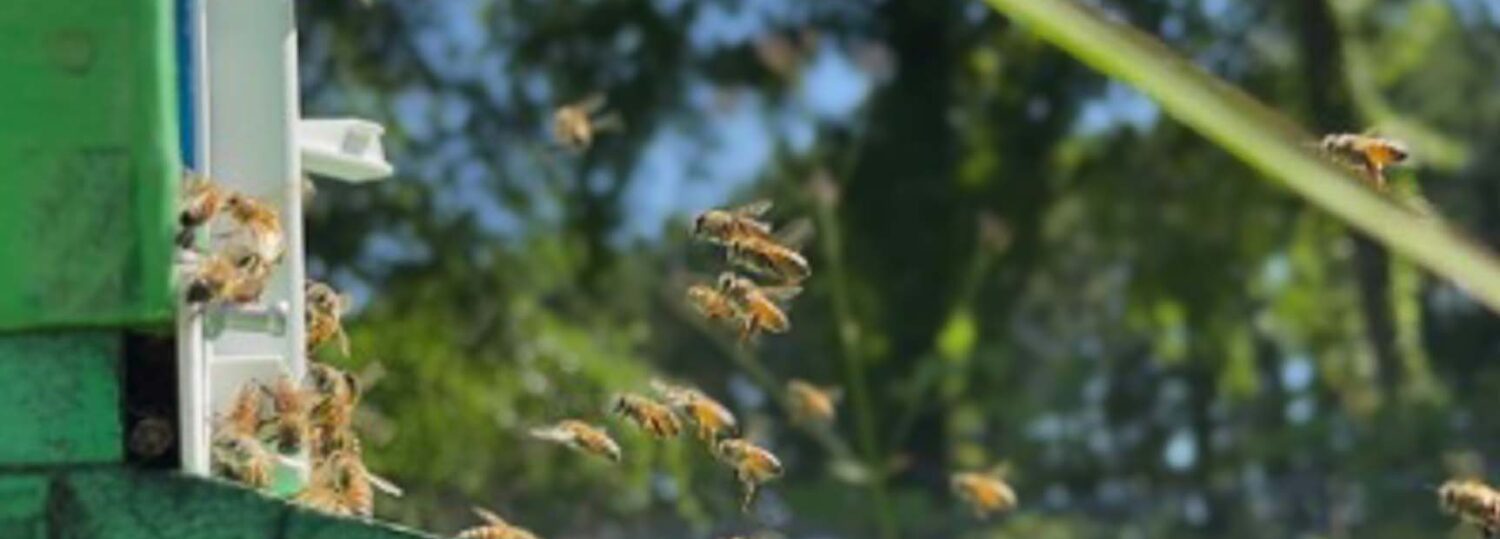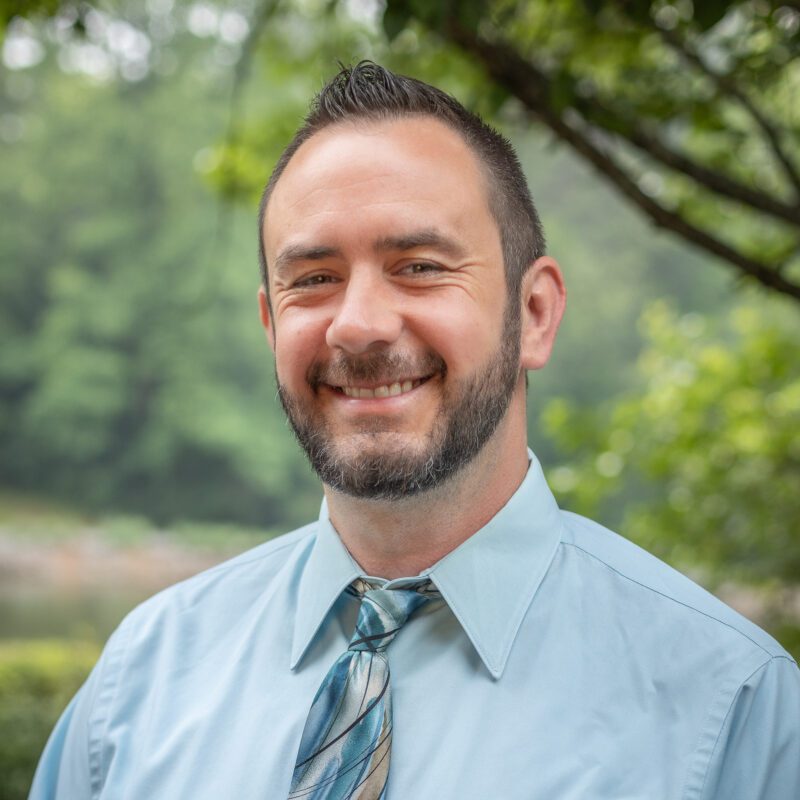Our Teacher Innovator Spotlight showcases the creative, hands-on teaching strategies that Kenan Fellows are bringing to their schools, districts, and beyond. In this edition, we feature Brandon Dillman, a science coordinator with Onslow County Schools, who is using the art of beekeeping to help students explore and understand weather patterns. The N.C. Department of Public Instruction supported his fellowship for the 2024-25 cohort year.
To learn more about the beekeeping initiative, follow the White Oak Green Team on Instagram at @leafyourlegacy and @buzzattheoak. You can also tune in to the WOHS BuzzTube YouTube channel to observe hive activity.
Can you tell us a little about your background and what led you to become a science coordinator?
I spent 16 years in the classroom as an environmental science teacher at White Oak High School in Jacksonville, North Carolina, where I prided myself on bringing science to life through hands-on, experiential learning. Whether it was building and maintaining a school apiary, guiding students through engineering projects for sustainable water systems, or leading outdoor labs and fieldwork, my goal was to always make science engaging, relevant, and empowering.
Over the years, I saw firsthand the powerful impact that innovative teaching strategies can have on student learning and curiosity. When the opportunity arose to become the district science coordinator, I saw it as a chance to expand that impact. My hope in taking on this role was and still is to support and inspire innovation in science educators across our country, especially new teachers entering the profession. I want to help them build confidence in using inquiry-based, student-centered methods that go beyond textbooks and spark a love for science in every classroom.
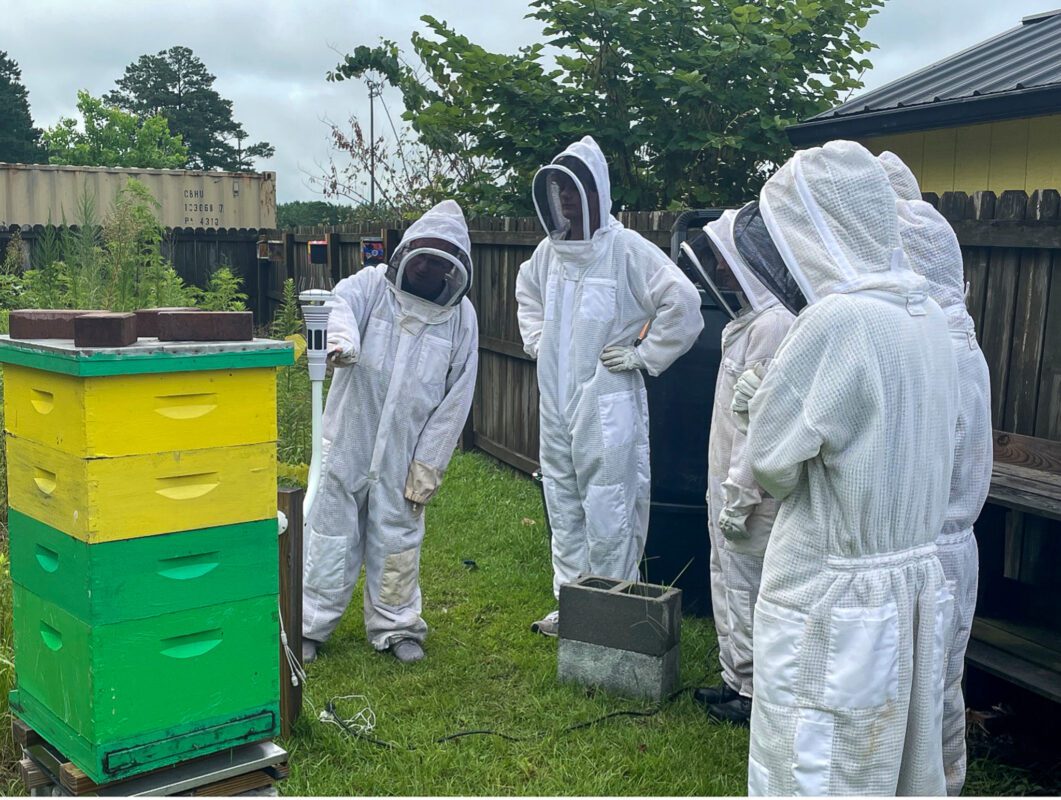
What drew you to apply for the Kenan fellowship, and how did it align with your goals as an educator?
I applied for the fellowship because I knew I needed to grow my skills as a leader to fully support and inspire other educators. The fellowship’s focus on building and empowering teacher leaders was exactly what I was looking for to strengthen my confidence and expand my leadership toolkit. Transitioning from classroom teacher to district science coordinator, I wanted to be as prepared as possible to lead with both credibility and empathy.
Equally important, I was excited about the opportunity to connect with like-minded, forward-thinking educators across North Carolina. I believe that great leadership is rooted in collaboration, and the Kenan Fellows Program offered a space to grow my professional network and build a community of educators who are passionate about innovation and student-centered learning. It has truly helped me feel more grounded, inspired, and ready to serve others.
You completed your fellowship with the National Weather Service/NOAA. What was that experience like, and how did it shape your approach to science education?
My experience with the National Weather Service (NWS) and NOAA was phenomenal. Working alongside Ryan Ellis and the team gave me an inside look at the science and coordination that goes into forecasting and public safety during severe weather events. One of the highlights was launching a weather balloon and collecting real-time atmospheric data, an experience that deepened my understanding of meteorology and gave me powerful, real-world examples to bring back to the classroom.
What stood out even more was the generosity of the NWS team. They went above and beyond by allowing one of my former students, who’s pursuing a career in forecasting, to join me for a day. It was a life-changing opportunity for both of us, connecting classroom learning in a way that was tangible and inspiring.
This experience reshaped my approach to science education by reinforcing the importance of career-connected learning. It reminded me how powerful it is when students can see science in action and meet professionals who use it every day to serve the public.
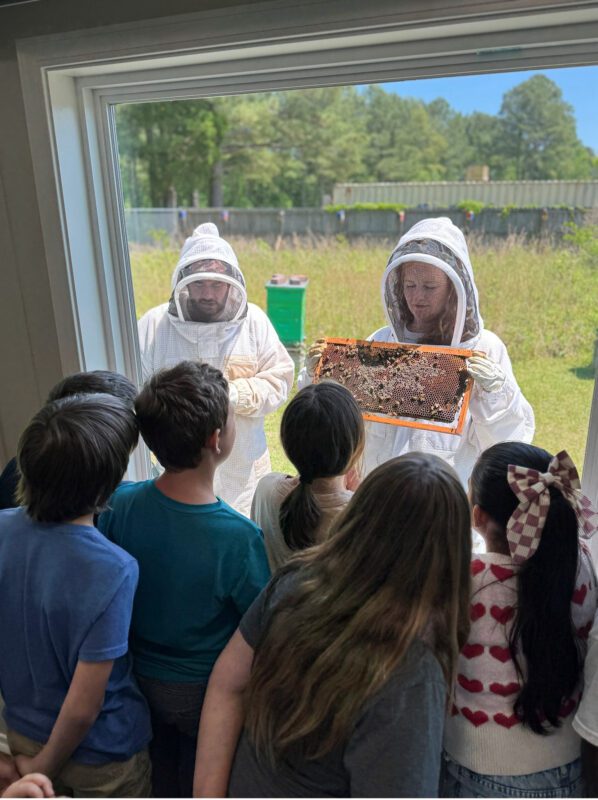
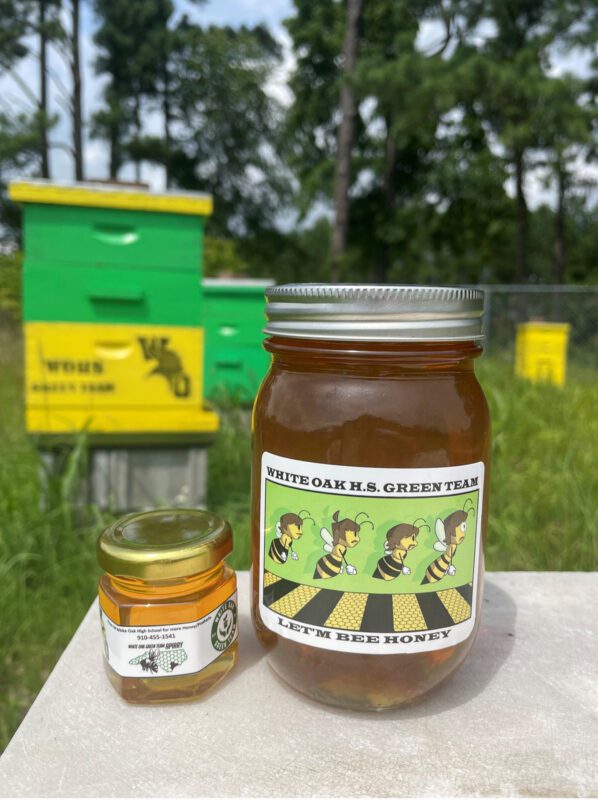
Was there a particular moment during your industry immersion with NWS that sparked the idea for your capstone project? How did this project evolve?
Even before the experience began, I knew I wanted to connect weather data collection and computational thinking to my passion for honeybees. But it wasn’t until Ryan Ellis from the NWS introduced me to the impact of citizen science and backyard weather stations that the vision really came to life.
Seeing how everyday individuals can collect meaningful data that contributes to real-time forecasting made me realize how powerful it would be to bring that same concept into classrooms. I wanted students in my community, and beyond, to understand how weather doesn’t just affect people, but also plays a critical role in the behavior, health, and survival of pollinators like honeybees.
From there, my project evolved into a cross-disciplinary initiative that blends environmental science, meteorology, and technology. My goal became to empower students to gather local weather data, analyze its patterns, and explore how those conditions influence bee activity, all while observing real-time bee behavior and weather data through a live-streamed YouTube channel. It’s been incredibly rewarding to build a project that connects bees and weather to students around the world, fostering a deeper appreciation for pollinators and inspiring a sense of environmental responsibility.
Can you describe how students are involved in caring for the bees, monitoring the data, and harvesting honey?
Our beekeeping journey began in 2019 when we introduced honeybees to campus as part of an extracurricular extension of the environmental club I founded, known as the Green Team. Every Friday after school, students worked with our hives alongside expert beekeeper, Master Craftsman, Eric Talley. This experience has helped students gain practical skills and cultivate leadership, responsibility, and curiosity about the natural world.
This space now welcomes classes of elementary students to explore the importance of pollinators. Our high school student beekeepers use the facility to maintain the colonies, monitor data such as hive health and weather conditions, and extract and bottle honey, learning every aspect of apiary management. They also serve as mentors during elementary visits, teaching younger students about the vital role bees play in our ecosystems and inspiring them to become future environmental stewards.
To further integrate the experience into academic learning, I developed a high school science elective course titled Apiculture and Anthecology. Through this course, students engage with the bees daily, maintain data logs, study pollinator ecology, and can earn both high school credit and state certification in beekeeping.
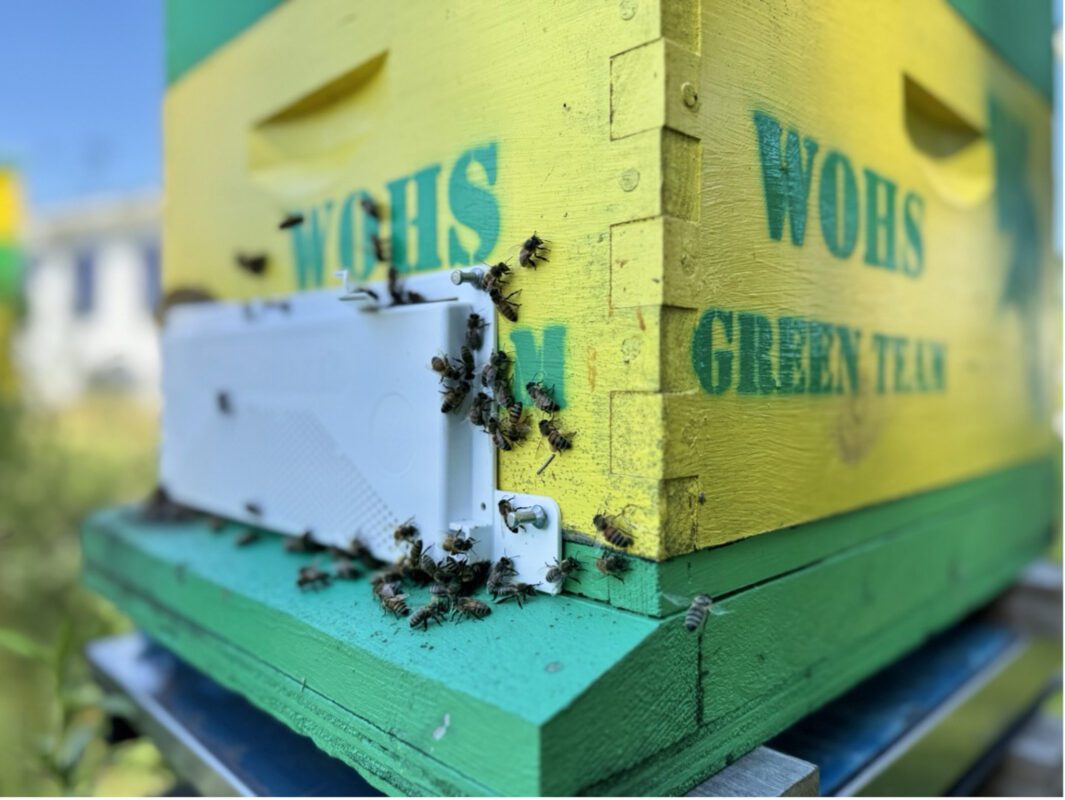
How has this project impacted student engagement or curiosity around science, agriculture, and the environment?
Being one of the first public schools in North Carolina to keep bees created a lot of buzz. Students were excited to be part of something groundbreaking, and that sense of novelty and pride drew many of them in. Young people are naturally curious and eager to try new things, and this project gave them the chance to explore science, agriculture, and environmental stewardship.
At the same time, many students came into the program with a real fear of bees. Through direct interaction, those fears have shifted into understanding and appreciation. We’ve seen students who were once apprehensive now confidently caring for hives.
The project has also deepened students’ understanding of agriculture and their connection to the local ecosystem. Our on-campus FFA school farm and the surrounding farms have directly benefited from increased pollination, and students now see firsthand how interconnected science, farming, and the environment truly are.
Your students are also helping raise awareness about the importance of pollinators. What strategies have you used to connect this work to the broader community?
We’ve made it a priority to ensure our students’ work with pollinators extends beyond the classroom. One of our most impactful strategies has been inviting the public into our education center during seasonal honey sales. These visits allow community members to see firsthand the incredible work our student beekeepers and the honeybees are doing to support our local environment.
Our students also take an active role in advocacy and outreach. They’ve presented to local civic and environmental organizations, helping to spread awareness about pollinator health and sustainability. Through these experiences, students not only share their knowledge but also develop confidence and public speaking skills.
Thanks to the Kenan Fellows Program, we’ve launched a livestream of our beehives and Tempest weather station that broadcasts 24/7, Monday through Friday, making our work visible to a global audience.
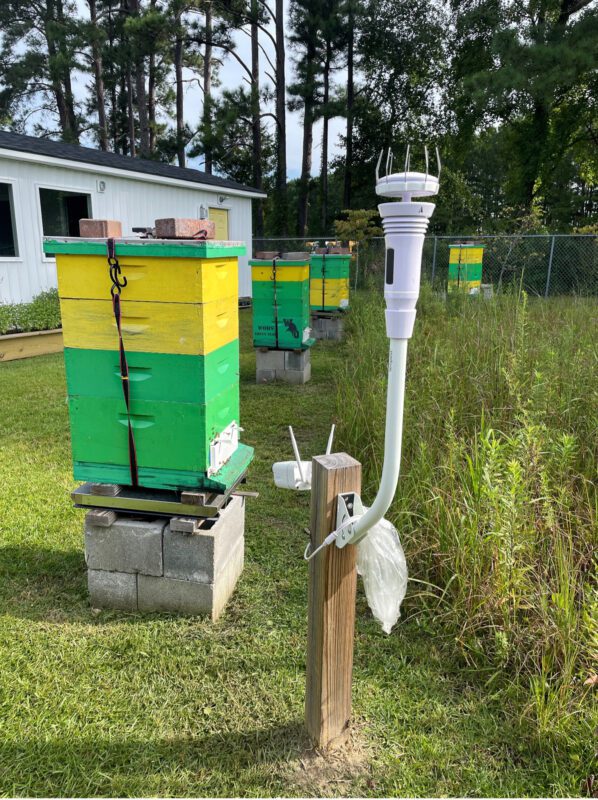
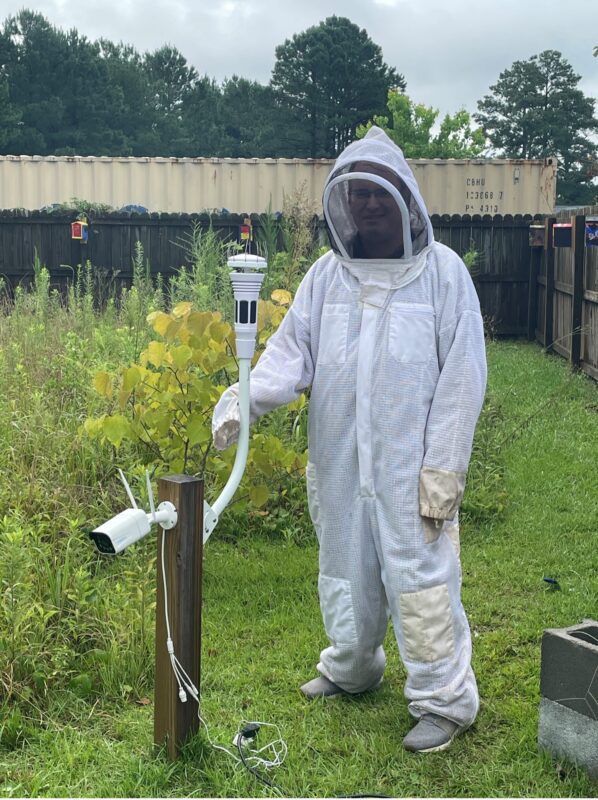
Have other educators or schools expressed interest in replicating or learning from your program?
Last year, we welcomed over 450 third-grade students into our on-campus apiary and education center for field trips focused on honeybee biology and the vital role of pollinators. What made it even more special was that our high school student beekeepers led the programming, serving as mentors and science communicators to the younger students.
Interest in our program has grown beyond our local district. I’ve had the opportunity to mentor teachers from neighboring counties, and even one from as far away as California, on how to begin the process of introducing beekeeping into their schools. These conversations have been incredibly rewarding and reaffirm the need for hands-on science experiences across all grade levels. Expanding this outreach is a personal goal of mine moving forward. I’d love to continue.
What’s next for the apiary program?
The future of our apiary program is focused on expanding access, deepening student involvement, and broadening our impact beyond the walls of White Oak High School. Our immediate goal is to increase usage of the apiary across our district and neighboring counties, welcoming more elementary students for field trips and enrolling more high school students in our Apiculture and Anthecology course.
I’d also love to see more school-based apiaries established across the state and country. Helping other educators replicate our model is something I’m passionate about, and I’m hopeful we can build new partnerships to support that kind of expansion.
Another exciting initiative is launching a summer Youth Beekeeping Camp for students in grades 6-12 outside of White Oak. This would allow us to train and certify more young beekeepers while also giving our alumni the opportunity to return and serve as camp mentors.
We’re also entering a new chapter of student-led research. Our current student beekeepers are fascinated by the idea of acoustic attraction between pollinators and flowers. While it’s well-known that bees rely on color and pheromones, our students want to investigate whether flowers also emit micro-acoustics or vibrational energy when in bloom to help attract pollinators. This research will begin soon, and it’s a powerful reminder that when students are inspired, they start asking the kinds of questions that drive real scientific discovery.
